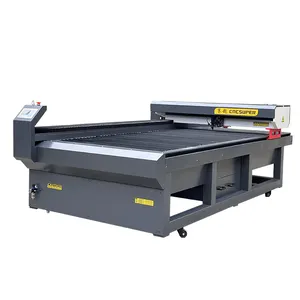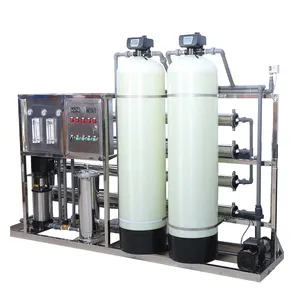Popular in your industry










Related Searches:





















Top categories
About custom laser cutting machine
Types of Custom Laser Cutting Machines
Custom laser cutting machines are sorted into two main types, the CO2 laser cutting machine and the fiber laser cutting machine. Each of the two types has unique features, strengths, and applications. They are described as follows:
- CO2 Laser Cutting Machine:
The CO2 laser beam is generated within the laser resonator using a mixed gas that comprises carbon dioxide, helium, and nitrogen. The laser beam is then delivered to the cutting head through a system of mirrors, which focuses it onto the material to be cut. The focused laser beam heats, melts, and vaporizes the material, creating a clean and precise cut. CO2 laser cutting machines are ideal for cutting non-metal materials such as wood, acrylic, glass, leather, and plastic. They offer high precision and can cut through thick materials. CO2 laser cutters are also available in two types, the galvanometer-based (galvo) laser and the gantry-based laser. The galvo-based laser is usually more efficient and faster than the gantry-based laser but has a limited work area, while the gantry-based laser is suitable for cutting large materials like metals.
- Fiber Laser Cutting Machine:
Fiber laser cutting machines use a solid-state laser generator to produce a laser beam that is delivered through a fiber optic cable to the cutting head. The laser beam is then focused onto the material to be cut, where it heats and melts the material, creating a precise and clean cut. Fiber laser cutting machines are mainly used for cutting metal materials such as steel, aluminum, brass, and copper. They are known for their high-speed cutting capabilities, precision, and efficiency. Fiber laser cutters are available in different power levels to suit various cutting applications. The lower power options are suitable for thin materials, while the higher power options can cut through thicker metals. Fiber lasers are also available in different configurations, such as open-bed machines, tube cutting machines, and compact fiber lasers.
Specifications and maintenance of custom laser cutting machines
The following specifications of custom laser cutting machines can be used to meet the unique demands of different industries and materials.
- Working area
It is the maximum dimension of the material that a laser cutting machine can process. The working area of a laser cutting machine is usually presented in length by width, such as 1300mm x 2500mm. Custom machines can be designed with working areas tailored to specific material sizes and industry needs.
- Laser power
Laser power is the amount of energy released by the laser beam, affecting cutting speed and thickness. Laser cutting machines use different units of power, usually ranging from tens to hundreds of watts. For example, cutting machines with 300W or 500W laser powers are suitable for precise cutting of thin materials, while those with 1000W or higher laser powers are better for thick materials. The laser power of a custom laser cutting machine can be adjusted to suit specific material types and thicknesses.
- Cutting speed
The cutting speed of a laser cutting machine refers to how quickly the laser beam moves across the material during the cutting process. It is usually measured in millimeters per minute. The cutting speed of the machine can vary depending on the material being cut and the thickness of the material. For instance, a typical laser cutting machine may have a speed of 1000 to 4000 mm per minute for metal, depending on the type and thickness of the metal. The cutting speed of a custom laser cutting machine can be fine-tuned to achieve optimal cutting results for specific materials.
- Positioning accuracy
Positioning accuracy refers to the ability of a laser cutting machine to precisely locate the cutting point on the material. It is usually measured in millimeters and indicates the machine's level of precision. The positioning accuracy of a laser cutting machine is determined by the control system and optical components. Typical laser cutting machines have a positioning accuracy of +/- 0.03 mm. Custom machines can be designed with higher accuracy to meet specific precision requirements.
- Maintenance
Proper maintenance is essential to ensuring the functionality and longevity of a custom laser cutting machine. Regular maintenance includes but is not limited to the following items.
- Optical system
Check the optical components, including mirrors and lenses, for any damage or contamination. Clean the optical surfaces with a gentle, non-abrasive cleaner to remove any debris or residue that may affect the laser beam's quality.
- Gantry and guide rails
Inspect the gantry system and guide rails for any dirt, debris, or build-up. Wipe them with a clean, dry cloth and then lubricate the guide rails to ensure smooth movement and precise positioning.
- Laser tube and power supply
Examine the laser tube for any signs of damage or wear. Check the power supply connections and cables for loose connections or damage. Calibrate the laser power and energy settings, and ensure that the cooling system is functioning correctly to maintain proper temperature and humidity.
- Safety precautions
Always follow safety guidelines when performing maintenance on a laser cutting machine. Ensure the machine is powered off before conducting any maintenance. Use appropriate personal protective equipment, such as safety glasses and gloves, to prevent injuries.
Scenarios of using custom laser cutting machines
Custom laser cutting machines are versatile tools used across many industries for various applications and material types. Here are some common scenarios for the use of a custom laser cutting machine:
- Manufacturing and production
Custom laser cutting machines are widely used in the manufacturing and production of different industries. They can precisely cut materials like metal, wood, acrylic, etc., into custom shapes, sizes, and designs for products such as metal parts, signage, furniture, and more. Laser cutting machines are popular in the fashion industry for cutting intricate patterns and designs into fabric for clothing, accessories, and upholstery. Because of their high accuracy and quality, laser cutting machines can streamline the production process and ensure consistent product quality.
- Prototyping and customization
Custom laser cutting machines are also used for prototyping and customization. They can quickly produce prototypes of new products or designs for testing and evaluation. Laser cutting machines are also ideal for making personalized items, such as custom jewelry, nameplates, and gifts. Their flexibility allows for small-batch production of unique, one-of-a-kind products.
- Construction and architecture
Laser cutting machines are indispensable tools in the construction and architectural industries. They can cut various building materials, such as steel, aluminum, and glass, with high precision. Laser cutting machines are used to create architectural features, decorative panels, and custom elements for construction projects. Their ability to produce intricate designs adds a unique touch to buildings and interior spaces.
- Automotive and aerospace
Custom laser cutting machines are commonly used in the automotive and aerospace industries. They are ideal for cutting precise components, such as gaskets, seals, and engine parts. Laser cutting machines are suitable for working with the lightweight materials used in these industries, like carbon fiber and titanium. Their high precision and accuracy meet the stringent requirements of the automotive and aerospace sectors. Laser cutting machines improve production efficiency and contribute to the development of advanced vehicles and aircraft.
How to choose custom laser cutting machines
When selecting a custom laser cutting machine, there are several factors to take into consideration. These factors include the following:
- Material and Thickness: Consider the types of materials and their thicknesses that will be cut. Some laser types are better suited for certain materials than others. Also, take note of the maximum and minimum thickness requirements.
- Cutting Area and Workpiece Size: The cutting area of the laser machine defines the maximum dimensions of the workpieces that can be accommodated. Ensure that the laser cutter's cutting area and the maximum workpiece size meet the application's needs.
- Cutting Speed and Power: The laser's power output affects cutting speed and maximum thickness capacity. Choose a laser power that can achieve the desired cutting speed without compromising quality. Consider the application's production volume and speed requirements.
- Precision and Accuracy: Consider the level of precision (measured in terms of positional accuracy and repeatability) required for the application. Choose a laser with the appropriate features and control systems to achieve the desired precision.
- Automation and Integration: Depending on the production needs, consider the laser machine's capacity for automation and integration. Features like automatic loading/unloading systems and compatibility with CAD/CAM software can enhance workflow efficiency.
- Energy Efficiency and Operating Costs: Consider the laser machine's energy efficiency. Opt for models with energy-saving features. Also, evaluate the overall operating costs, including maintenance and consumables.
- User Interface and Software: The laser machine's software and user interface affect ease of use and programming capabilities. Choose a machine with user-friendly software and controls that match the operator's skill level.
- Support and Service: Opt for a reputable laser cutting machine manufacturer that provides excellent customer service, technical support, and maintenance services. Ensure the availability of local service and support to address any issues promptly.
Q&A
Q1:What materials can be processed with a custom laser cutting machine?
A1: A wide range of materials can be processed with a laser cutting machine, including metals (aluminum, steel, copper, etc.), plastic (acrylic, ABS, polycarbonate, etc.), wood, glass, and many other materials. However, each laser machine is specifically designed to cut certain materials, and some materials may not be compatible.
Q2: Can different types of lasers be used in the same machine?
A2: Yes, some laser cutting machines use a combination of different laser sources. For example, a machine may use a CO2 laser for cutting and a fiber laser for engraving. These hybrid machines are designed for specific applications that require both cutting and engraving.
Q3: Can a laser cutting machine be used for mass production?
A3: Yes, laser cutting machines are commonly used for mass production across various industries. Laser cutters are known for their ability to produce high-precision and consistent cuts rapidly, making them suitable for scaling up production. Many manufacturers use laser cutting machines for applications such as sheet metal fabrication, automotive components, electronics, signage, and more.
Q4: What are the maintenance requirements of a laser cutting machine?
A4: Regular maintenance is crucial to ensure the optimal performance and longevity of a laser cutting machine. Typical maintenance tasks include cleaning the machine, checking and replacing the laser tube or cutting head, calibrating the machine, and performing software updates. Manufacturers usually provide specific maintenance guidelines and schedules for their laser cutting machines.































